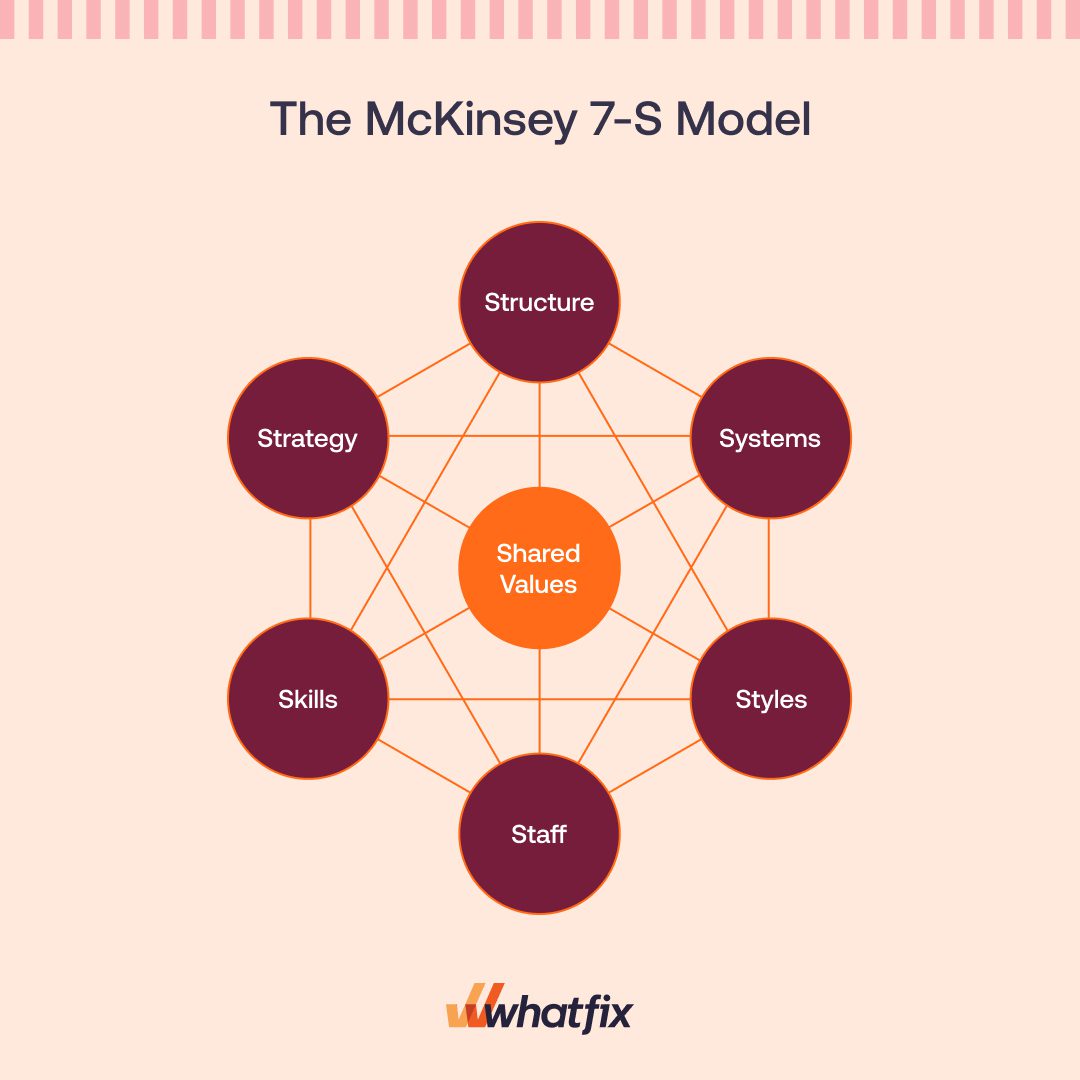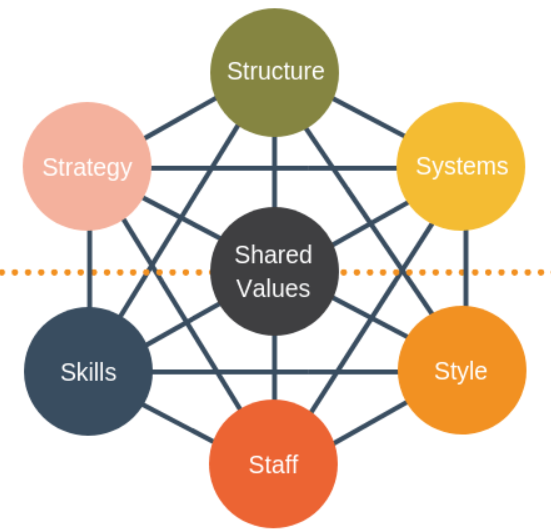
The McKinsey 7S model is a management and organizational tool designed to help businesses evaluate their strategic position and implement changes for better performance. It was developed by consulting firm McKinsey & Company in the early 1980s. The model assumes that all seven components are interconnected and must be in harmony to achieve success.
The model is called 7S because it considers seven key elements of an organization, which fall into two categories: hard and soft. The hard elements are tangible and easier to identify and influence, while the soft elements are intangible and harder to change. The hard elements include structure, strategy, and systems, while the soft elements involve style, staff, skills, and shared values.
The McKinsey 7S model is important because it helps organizations to understand the relationship between their various components and how they impact each other. It enables businesses to identify what aspects of their strategy and organization need to be addressed, and how they can be strengthened or aligned.
The first step in using the McKinsey 7S model is to identify the seven elements of the organization and assess how well they are aligned with one another. This can be done through interviews, surveys, and analysis of financial and performance data. Then, the results can be used to identify areas for improvement or change.
One key consideration when implementing the McKinsey 7S model is that all seven elements must be considered together. Changes made to one element can affect another, so it’s important to evaluate the impact of any changes before implementation. For example, if a company changes its structure, it may need to reconsider its staffing and skills to ensure the change is successful.
The hard elements of the model (structure, strategy, and systems) tend to be the focus of many organizations. However, it’s important not to overlook the softer elements (style, staff, skills, and shared values), as they can play a critical role in shaping the culture and performance of an organization.
In summary, the McKinsey 7S model is a management tool that helps organizations evaluate their strategic position and identify areas for change and improvement. It considers seven key elements, including hard elements like structure, strategy, and systems, and soft elements like style, staff, skills, and shared values. By evaluating these elements and making changes where necessary, organizations can improve their performance and achieve better results.




